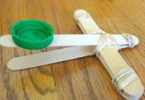As a marketing specialist, navigating the nuances of Facebook Automated Ads is crucial for optimizing campaign performance and managing advertising budgets effectively. In this comprehensive guide, we’ll explore the facets of Facebook Automated Ads cost, providing valuable insights and practical examples to help you harness the power of this tool.
The Basics of Facebook Automated Ads
Before diving into the specifics of cost, it’s essential to understand what Facebook Automated Ads are. This system simplifies ad creation using Facebook’s algorithms to optimize your ads’ performance. By answering a few questions about your business and goals, Facebook automatically suggests a customized advertising plan — targeting, budget recommendations, and even creative content.
How Does Pricing Work?
The cost of Facebook Automated Ads isn’t fixed; it operates on a bidding system similar to traditional Facebook Ads. The amount you pay is influenced by various factors such as ad placement, competition, audience targeting, and your bid strategy. The flexibility of Facebook Automated Ads means you can start with any budget and adjust accordingly based on the results and insights gained.
Key Factors Influencing Automated Ad Costs
Several key elements determine the final cost of your Facebook Automated Ads:
- Bidding Strategy: Whether you choose the lowest cost or target cost bidding, your strategy can influence how much you pay.
- Audience Targeting: Broader audiences tend to cost less, whereas highly targeted demographics may increase the cost.
- Ad Quality and Relevance: High-quality, engaging ads often result in lower costs due to better performance and relevance scores.
- Industry Competition: Higher competition for ad space within your industry can drive up costs.
- Seasonality: Advertising costs can fluctuate based on the time of year, with peak seasons typically being more expensive.
Cost-Effective Strategies for Automated Ads
Implementing cost-effective strategies is paramount to maximizing your return on investment. By continuously monitoring your ads’ performance and tweaking your campaigns based on data-driven insights, you can ensure that every dollar spent is working hard for your business.
Real-World Examples and Case Studies
Success stories abound when it comes to Facebook Automated Ads. Small businesses and large corporations alike have leveraged this tool to achieve impressive results. For instance, a local boutique might use Automated Ads to increase foot traffic and see a substantial uplift in in-store purchases, while an e-commerce brand might target cart abandonment to boost conversions, all without breaking the bank.
The Role of Analytics and Reporting
Analyzing and reporting are critical in managing the cost of your Facebook Automated Ads. Regularly reviewing performance metrics allows you to identify areas where you can reduce spend or reallocate budget to higher-performing ads.
How much does it cost
When considering advertising on Facebook, one of the most pressing questions for businesses of all sizes is: “How much do Facebook Automated Ads cost?” The answer is not straightforward, as the cost can vary greatly depending on several factors. Unlike fixed-price advertising, Facebook’s automated ads operate on a dynamic pricing model that can fluctuate based on several variables. Let’s delve into the factors that shape the cost of these ads.
Variable Factors Impacting Cost
Facebook Automated Ads utilize a bidding system, and this competitive atmosphere means the cost can vary from one campaign to another. Here are the most influential factors:
- Ad Objective: The goal you select, such as brand awareness, website traffic, or conversions, can influence cost.
- Bidding Strategy: Opting for a cost-cap, bid-cap, or lowest cost bid strategy affects your ad spend.
- Audience Targeting: The specificity and demand for the audience you’re targeting can drive prices up or down.
- Ad Quality: Higher quality ads that engage users can result in lower costs over time.
- Industry and Competition: High-demand periods or industries can see higher ad costs due to increased competition.
Understanding Bidding and Budgets
Budgets for automated ads can be as flexible or as restrained as you need them to be. You can set a daily or lifetime budget, and Facebook will automatically manage your bids to get the best results based on the budget and goals you set. While there’s no minimum amount required to run ads, even small budget campaigns can be effective if optimized correctly.
Cost Control Features
Facebook offers features to help you control costs, such as bid caps and cost controls that ensure you don’t exceed the amount you’re willing to pay for a particular action or reach. Leveraging these can help manage your ad spend effectively.
Average Costs: What to Expect
While it’s challenging to pinpoint an exact average due to the variables involved, we can look at industry benchmarks. For example, the average cost-per-click (CPC) across all industries on Facebook can range from $0.50 to $2.00. This is just a rough guideline, and your costs could be lower or higher based on the factors previously mentioned.
Calculating Your Potential Spend
To estimate your potential ad spend, consider the following steps:
- Define your campaign goals and audience.
- Set a tentative budget based on those goals.
- Run a test campaign to gather initial data.
- Adjust your strategies and budget according to the performance metrics.
Building on the intricacies of Facebook Automated Ads, social media retargeting strategies are a sophisticated complement that can significantly enhance the efficiency of your digital marketing efforts. Retargeting involves showing ads to users who have previously interacted with your content or visited your website, harnessing the power of familiarity and interest already expressed.
Navigating the Cost of FB Ads
The cost of Facebook Automated Ads doesn’t have a one-size-fits-all answer. It’s a blend of your business goals, market conditions, and the quality of your ads. By starting with a clear strategy, a defined budget, and an understanding of Facebook’s bidding system, you can navigate the cost landscape with confidence. Monitor your campaigns, make data-driven decisions, and adjust your strategies to find the sweet spot for your ad spend that drives results and maximizes ROI.







